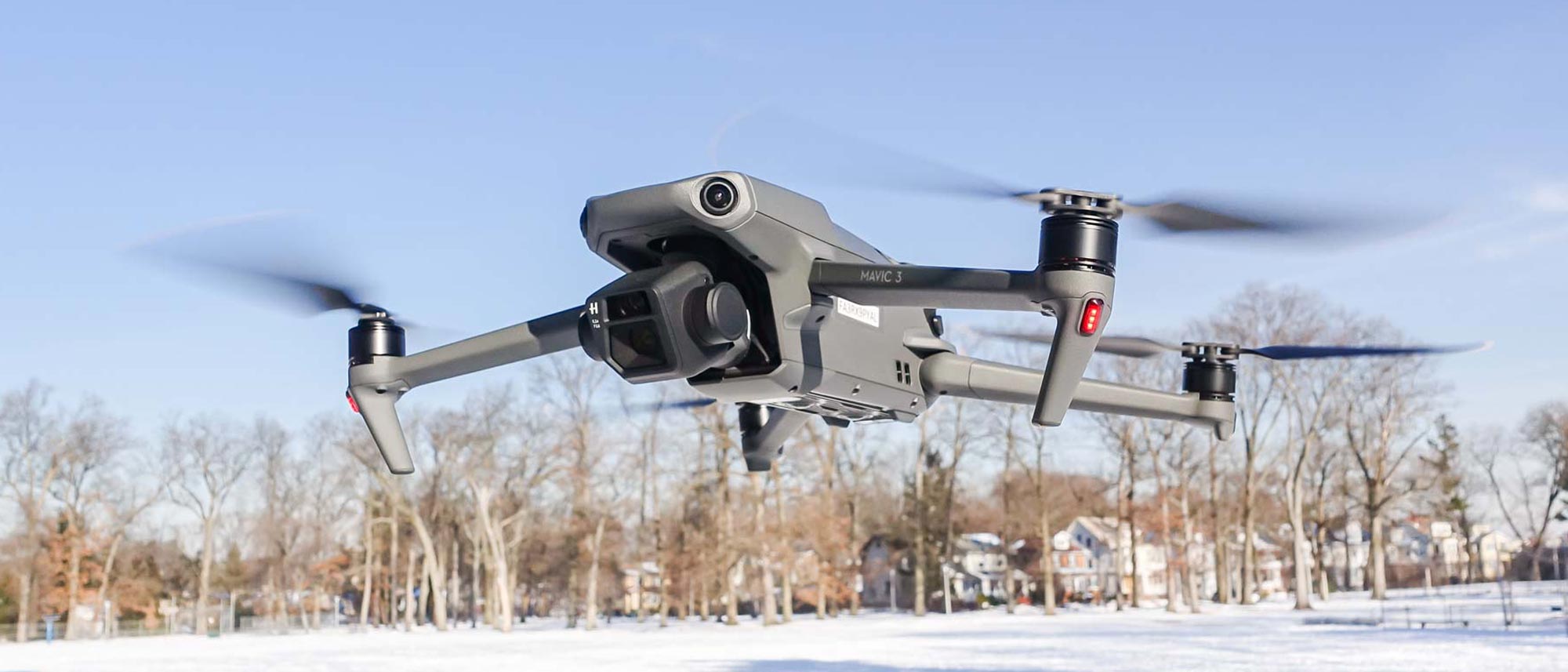Tom's Guide Verdict
The DJI Mavic 3 is the company’s best camera drone yet.
Pros
- +
Amazing camera quality
- +
28X digital zoom
- +
Long flight time
Cons
- -
Much pricier than the model it replaces
Why you can trust Tom's Guide
Flight time: 46 minutes
Cameras: 4/3 CMOS (20MP); 1/2-inch CMOS (12MP)
Smartphone controlled: Yes
FAA registration: Required
Indoor use: No
Rotors: 4 (2 blades per rotor, replaceable)
Size (unfolded): 13.7 x 11.1 x 4.2 inches
Size (folded): 8.7 x 3.8 x 3.6 inches
Weight: 1.97 pounds
Until now, if you wanted mirrorless-camera quality video from a drone, you’d have to actually mount a camera to a flying platform — not a cheap proposition. While the DJI Mavic 3 isn’t what you’d call inexpensive, it does have a 4/3 CMOS sensor, which, along with a secondary 28X digital zoom lens, a 46-minute flight time and omnidirectional sensors, makes it one of the most capable drones yet for videographers.
In essence, the Mavic 3 combines its two predecessors — the Mavic 2 Pro and the Mavic 2 Zoom — into a single drone. However, where the Mavic 2 drones cost around $1,500 when new, the Mavic 3’s starting price is a much steeper $2,199. Our DJI Mavic 3 review will look at all this drone is capable of, and if it’s the best drone for you.
DJI Mavic 3: Price and availability
The Mavic 3 went on sale in the fall of 2021. The drone (plus controller and battery) costs $2,199. A Fly More combo ($2,999) gets you three batteries, a charging hub, a set of four neutral-density filters, a spare set of propellers, and a carrying bag.
The DJI Mavic 3 Cine Premium Combo ($4,999) comes with a variant of the Mavic 3 that supports Apple ProRes 422 HQ video, and has 1TB of onboard storage. This package includes everything in the Fly More combo, but adds another four ND filters, and swaps out the standard remote for the DJI RC Pro, which costs $1,199 when sold separately.
DJI Mavic 3: Design
The Mavic 3 looks like DJI’s other Mavic drones, only bigger. The Mavic 3 has four arms that fold out from its body, which makes carrying the drone a lot easier.
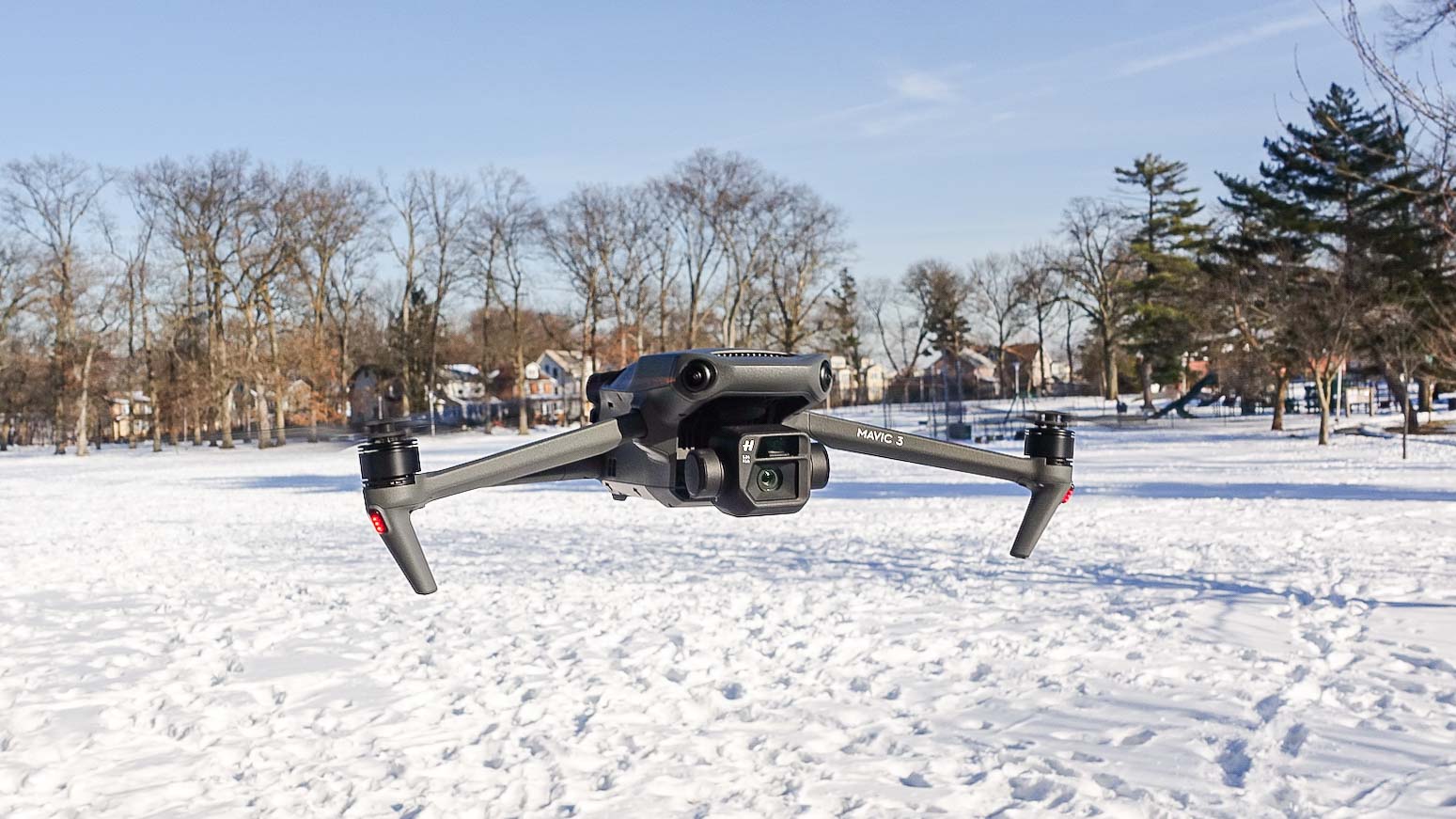
A large camera on a gimbal sits underneath the drone’s brow, and the battery slots into the rear. Right above the battery compartment is a USB-C port and a microSD card slot; while the Mavic 3 has 8GB of internal storage, you’ll want to add your own card.
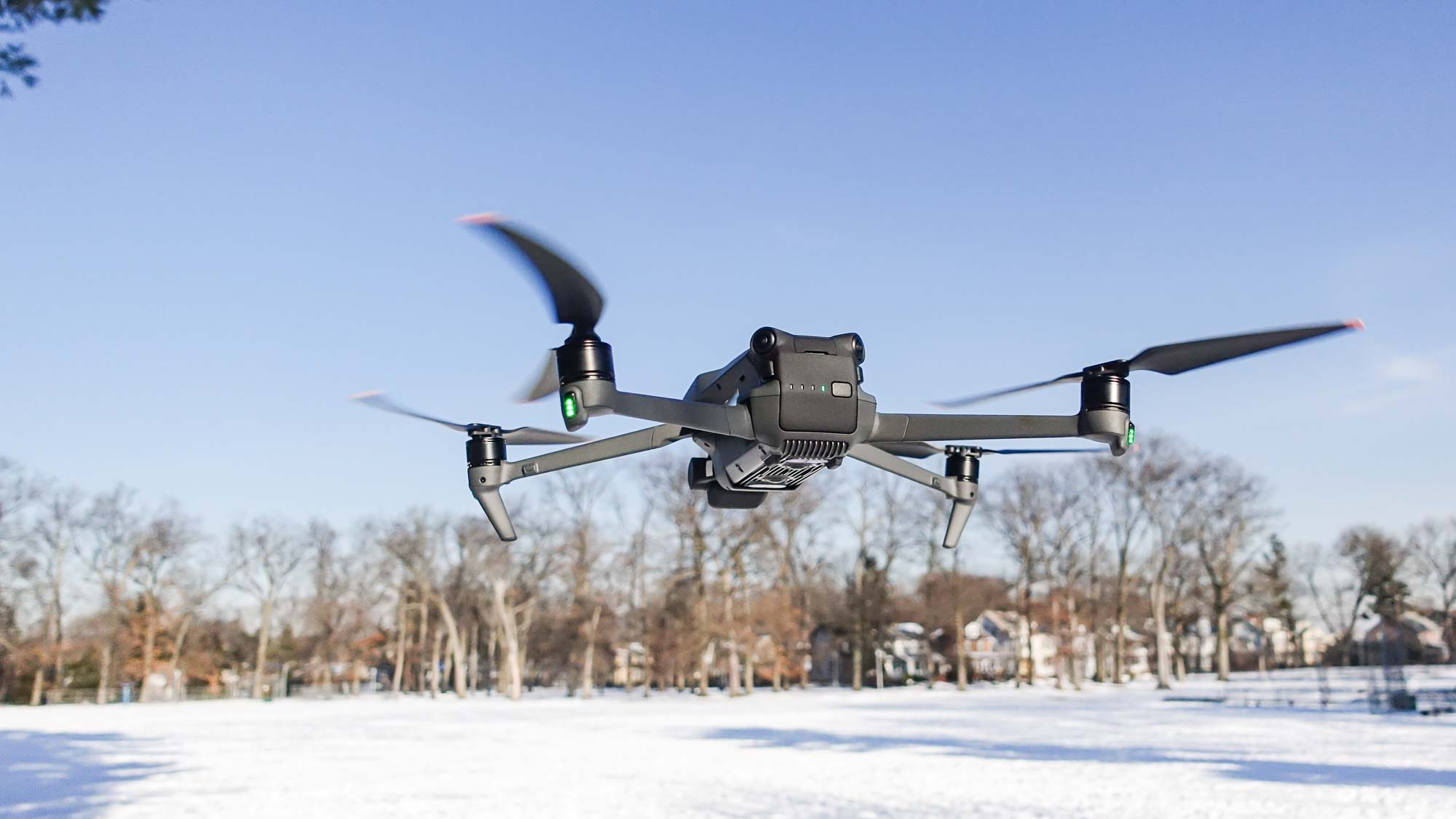
It’s a design that works, though I’m not a huge fan of the Mavic 3’s gray paint job. It’s a shade or two darker than its other drones, and that makes the drone harder to see when it’s up in the sky. How about a splash of bright orange or red?
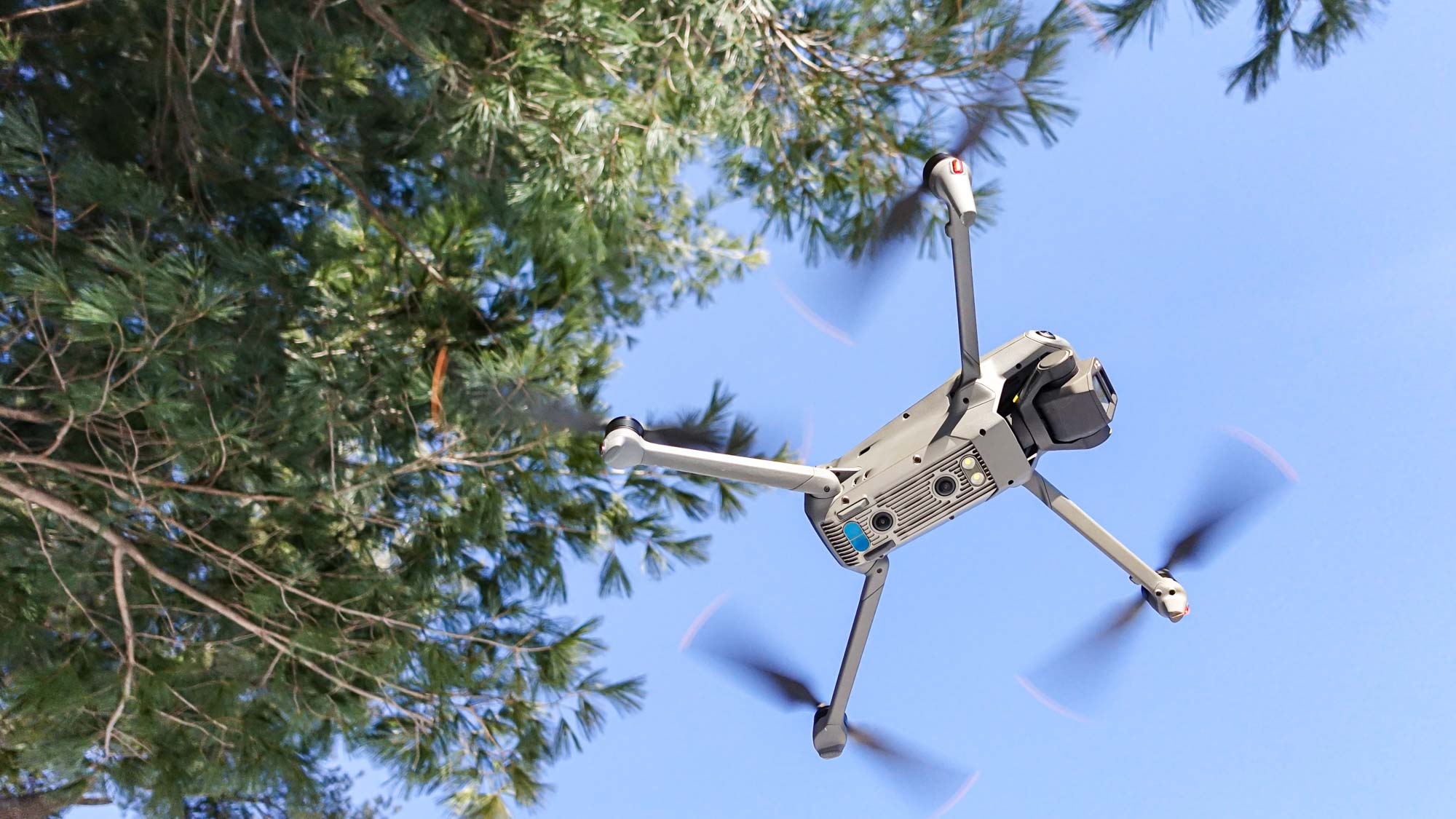
Apart from the camera, there are sensors on the front, back, top, bottom, and sides of the drone to keep it from crashing into things. (The DJI Air 2S, by comparison, lacks side-view sensors).
DJI Mavic 3: Image and video quality
The Mavic 3 has not one, but two cameras: A 4/3 CMOS Hasselblad sensor with a 20MP resolution, and a secondary 1/2-inch CMOS (12MP) sensor that’s used as its digital zoom lens.
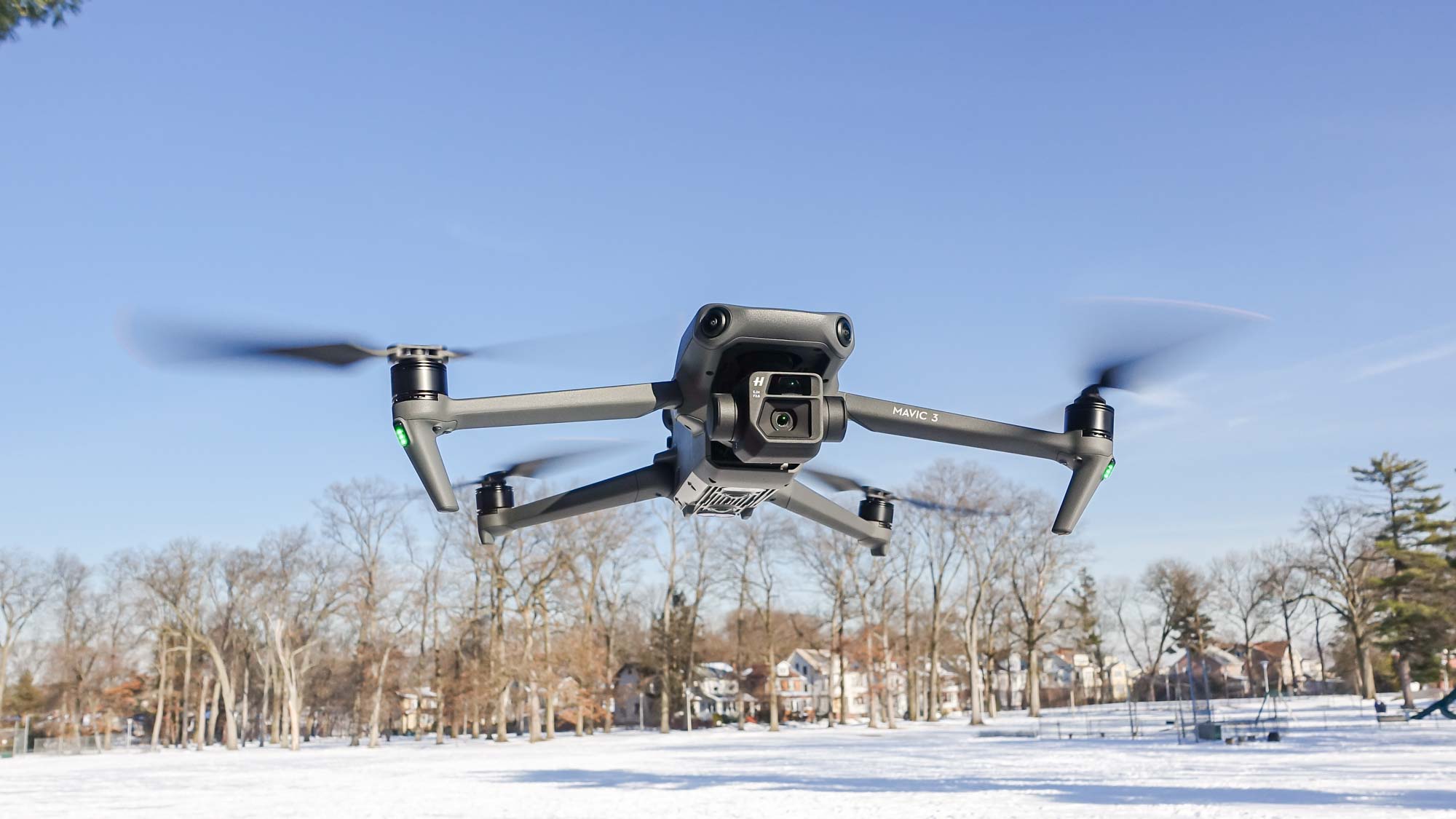
The primary camera has a 4-degree field of view, 24mm-equivalent lens with an aperture range of f/2.8 to f/11; the fact that you can adjust the aperture gives you a much greater degree of control than you’ll find with other drones. The ISO goes from 100 to 6400, but as with most other cameras, you start to see a lot of graininess at ISO 3200 and higher.
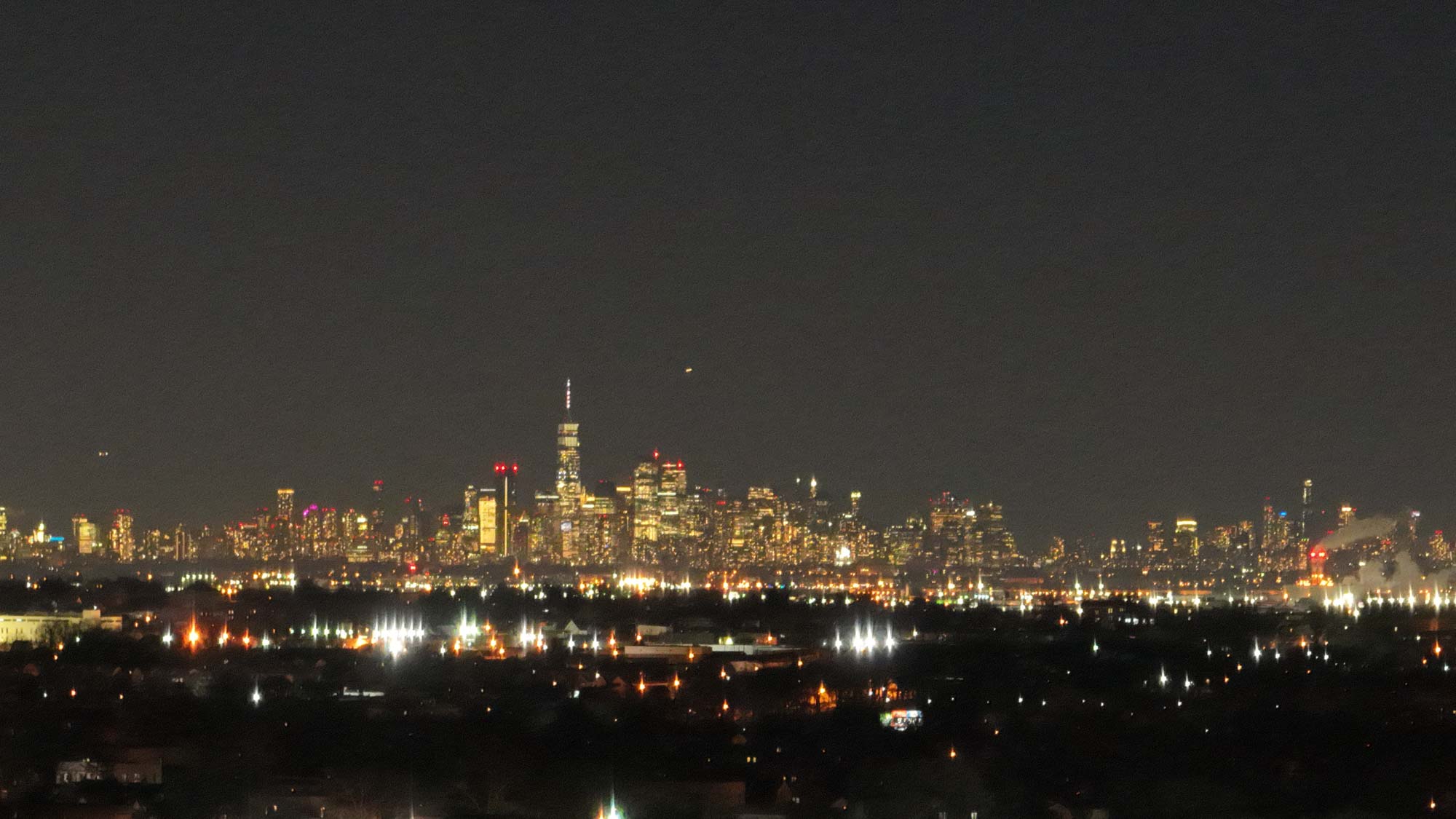
It’s capable of shooting video at a resolution of up to 5.1K (24/25/30/48/50 fps) as well as 4K (24/25/30/48/50/60/120 fps). The Mavic 2 Pro maxed out at 4K/30 fps, so this is a real step up.
The footage I shot — even in 4K — was truly impressive. I flew the Mavic 3 around my neighborhood as well as around a friend’s farm in upstate New York, and was able to pick out minute details in everything I captured.
Apart from the quality of its main camera, the Mavic 3’s 28x digital zoom is also pretty impressive. While you definitely lose a ton of detail at its maximum, you can really get up close from great distances.
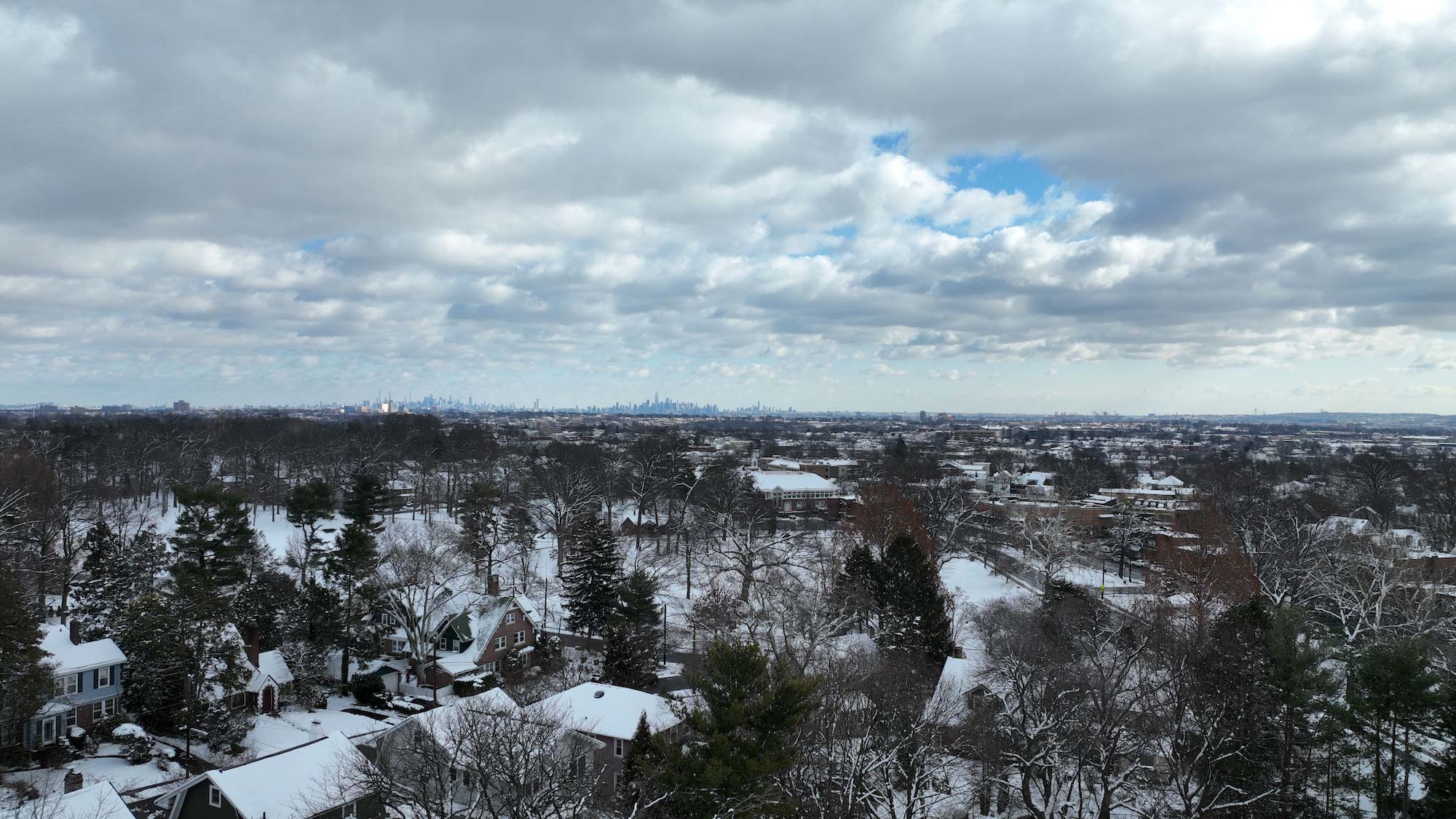
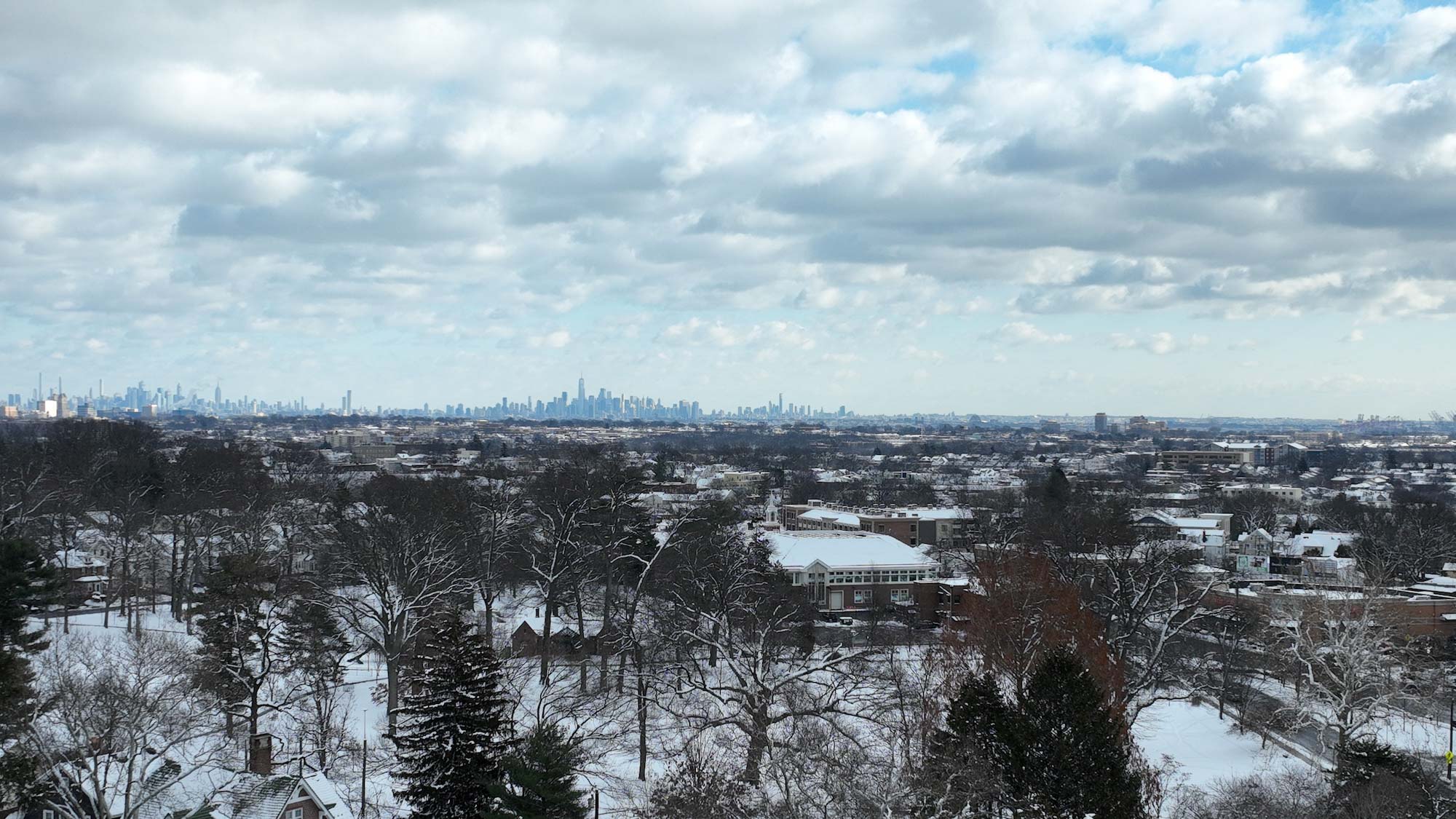
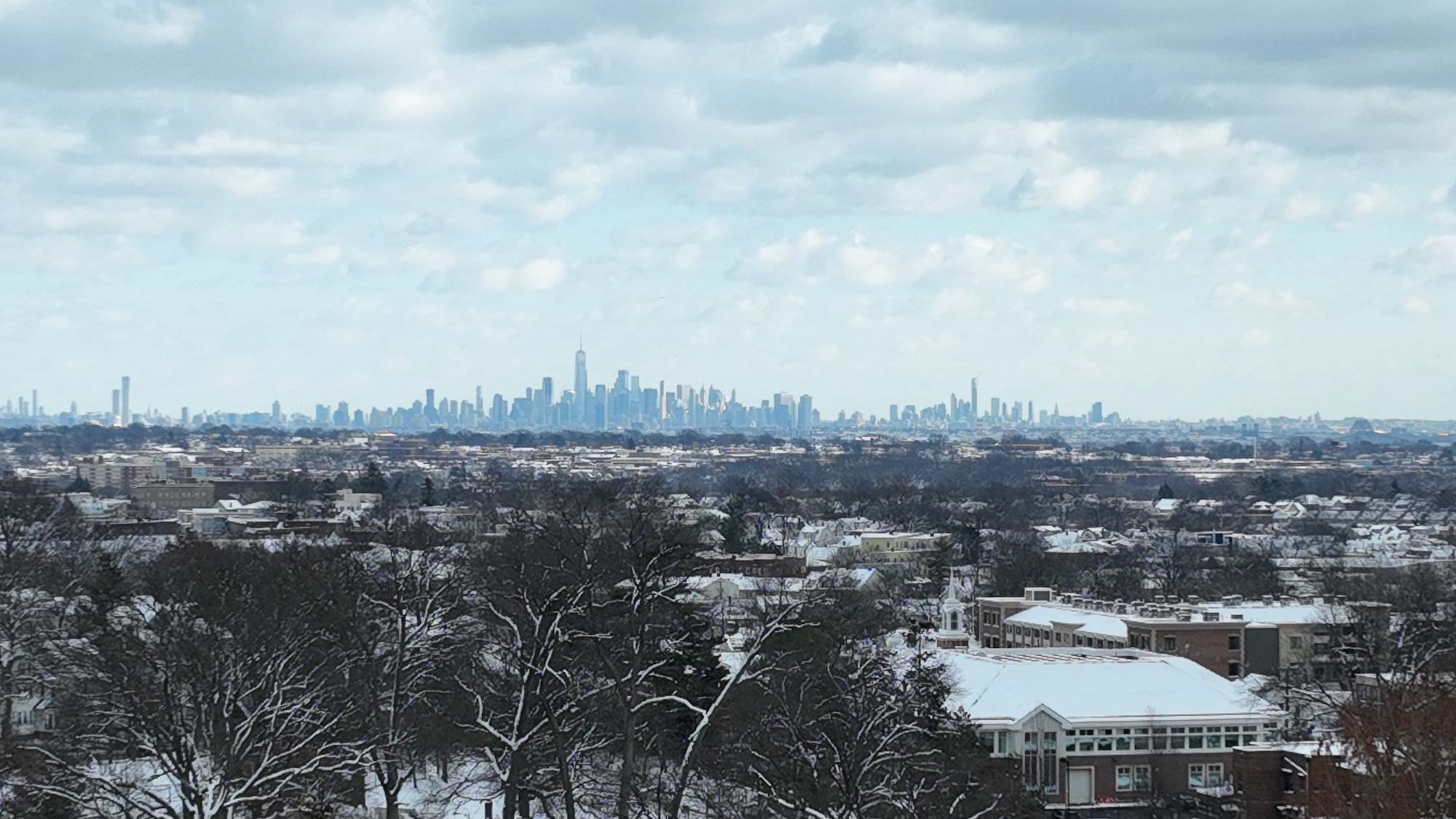
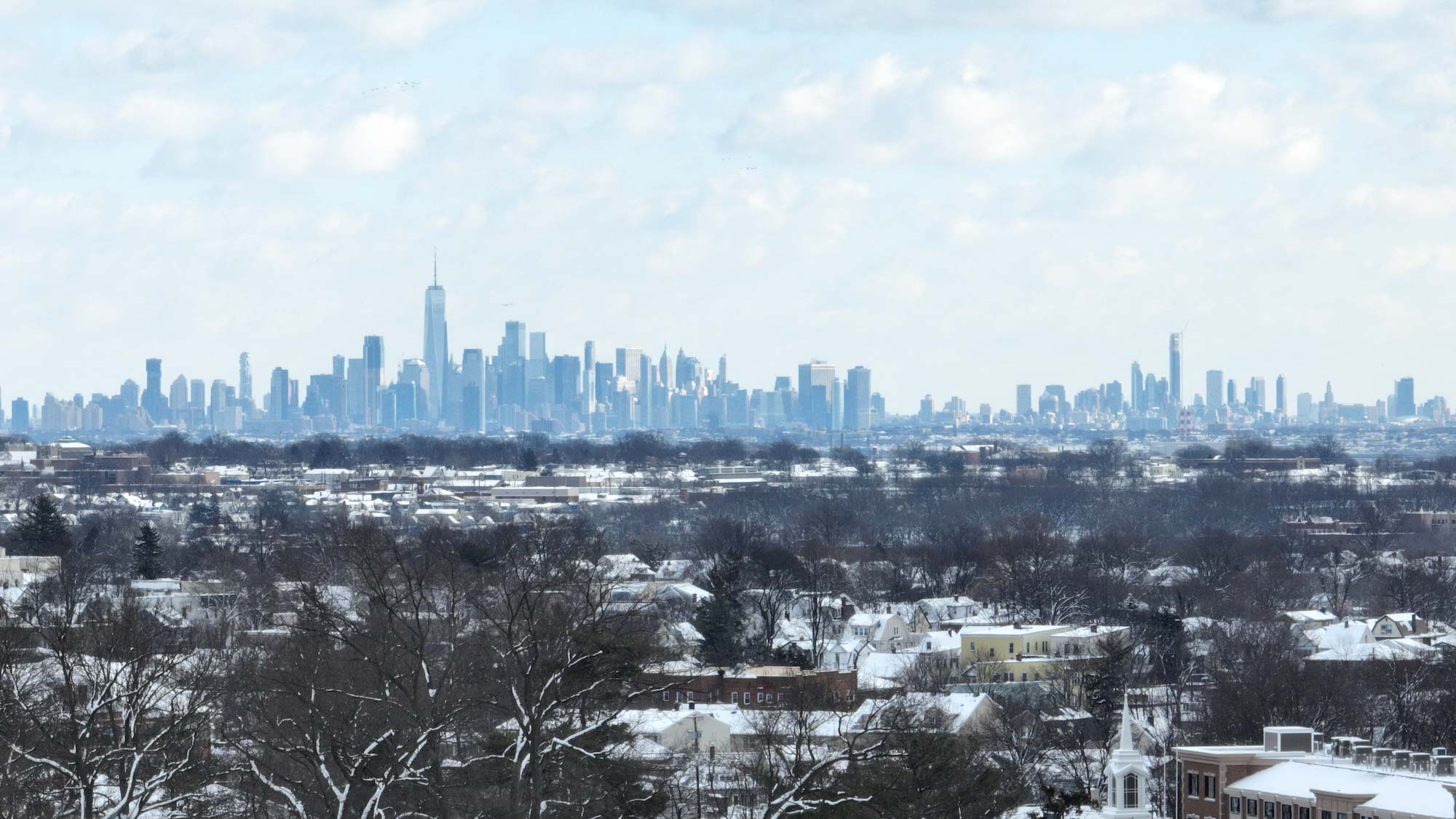
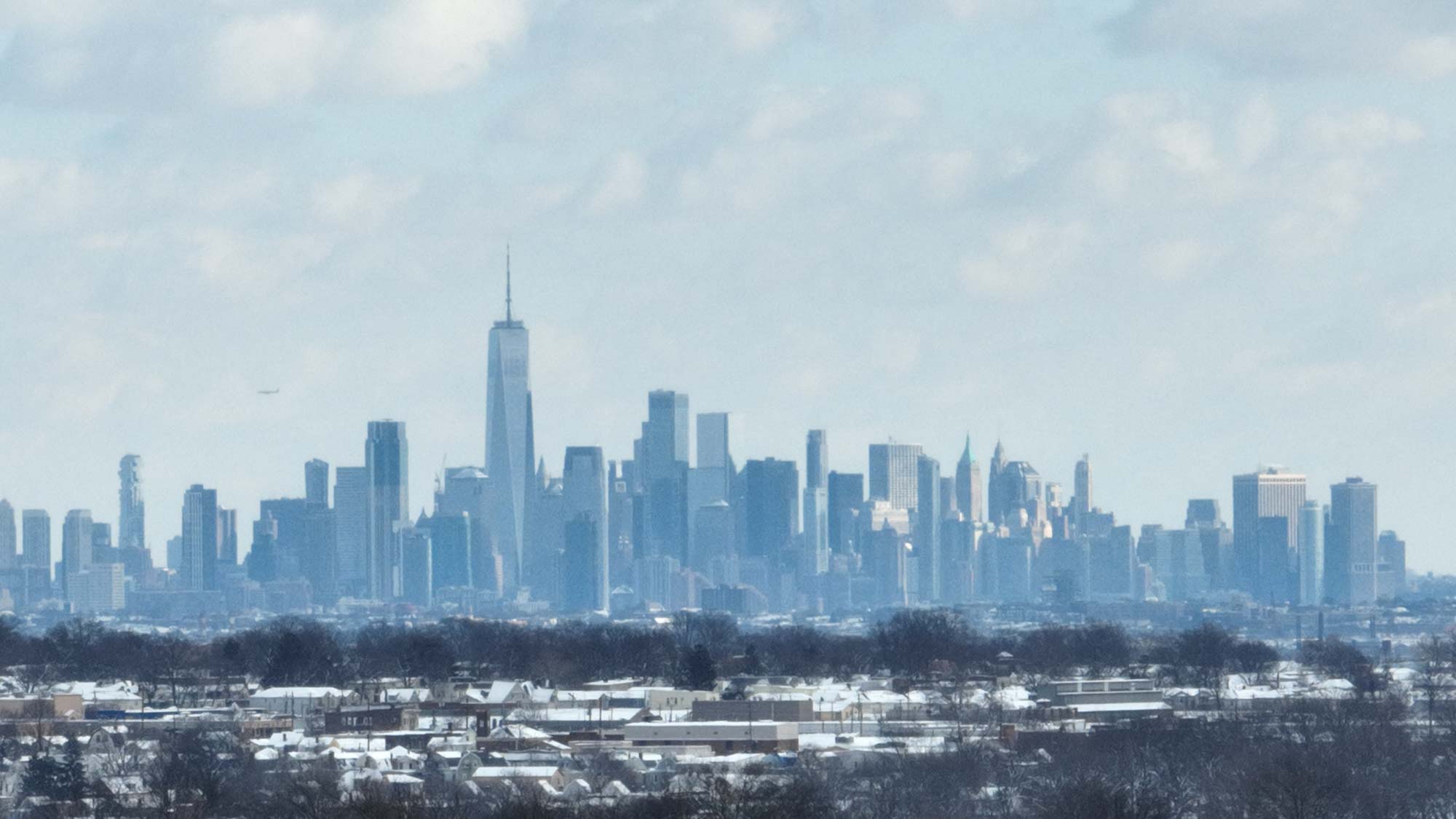

From my house, which is about 15 miles away from lower Manhattan, I was able to zoom in enough to see some distinguishing features on the Freedom Tower.
DJI Mavic 3: Flight time
With each successive model, DJI has continually improved the flight time of its drones; the Mavic 3 can stay aloft for a truly impressive 46 minutes (41 while hovering). While practice is a few minutes less than reality, that’s nearly 10 minutes longer than the Mavic Air 2. That extended flight time really makes a difference in letting you fly it longer and really get the shot you want. I’d still recommend picking up an extra battery or two, though.
DJI Mavic 3: Features and performance
Compared to the Mavic 2 Pro and Mavic Air 2, there aren’t any new flight modes in the Mavic 3. Like its predecessors, the Mavic 3 can lock onto a subject, and then fly several pre-set patterns, keeping the object in the center of the frame.
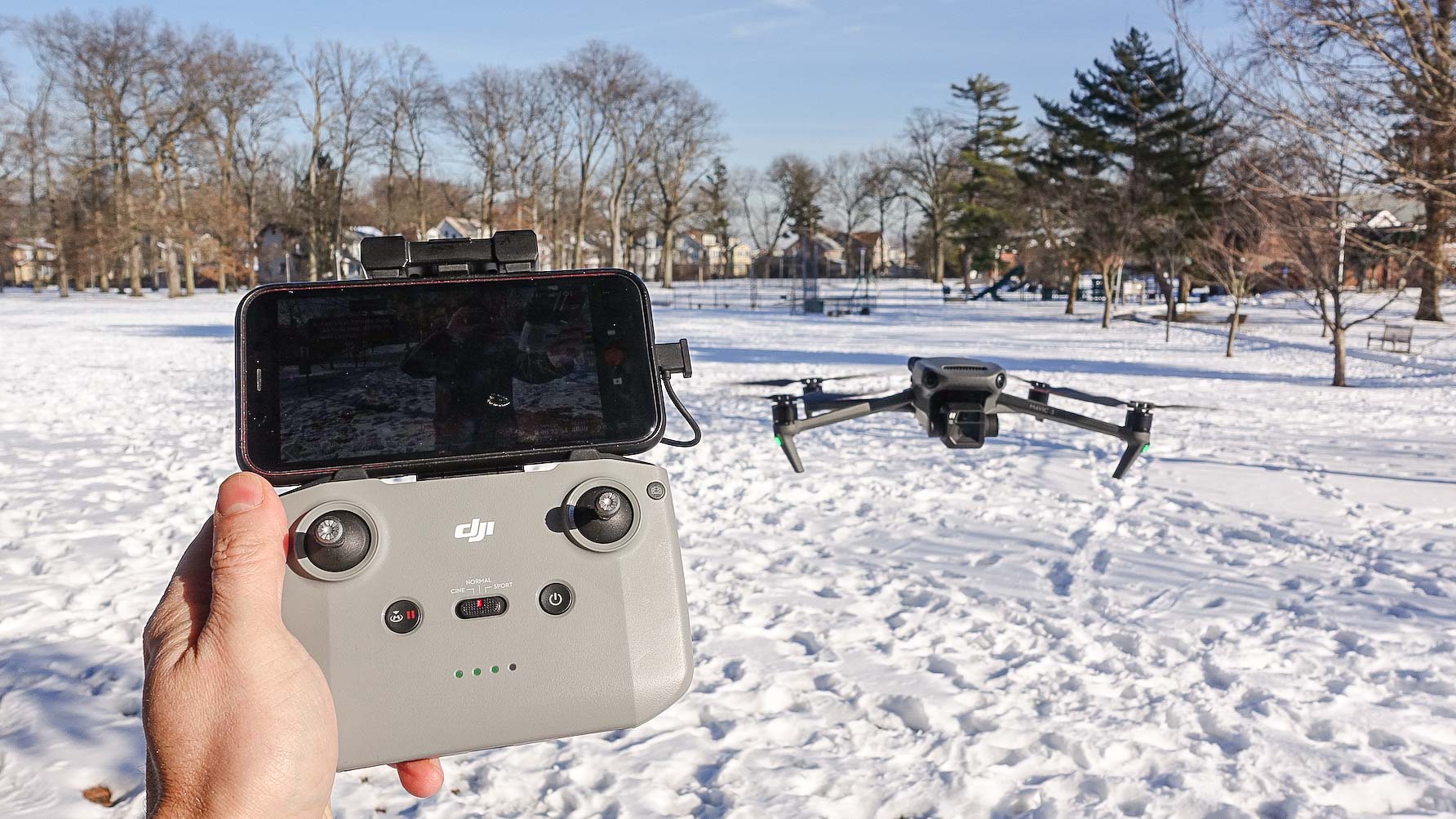
However, object-tracking has been improved: the Mavic 3 is better at following subjects regardless of how they’re moving and, according to DJI, its algorithms are also able to respond faster to subjects’ movements. Also here is the really clever ability for the drone to keep tracking you even if you go out of view for an instant, such as if you walk behind a tree. While you can’t stay hidden forever, it was neat — and more than a bit creepy — to have the Mavic 3 keep me in its sights.
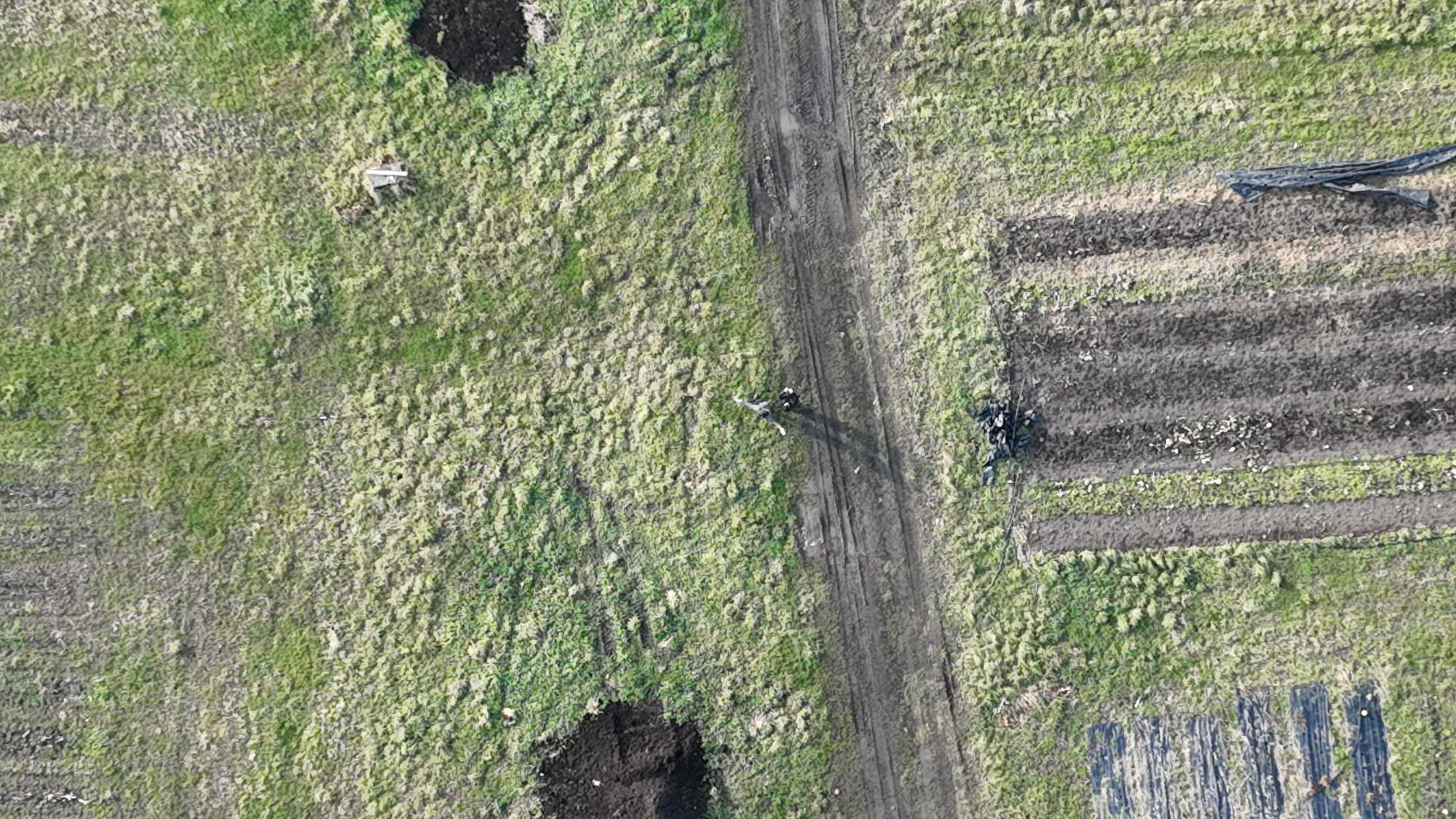
The Mavic 3 has three flight settings (Cinematic, Normal, and Sport); Sport mode will zip you along at up to 43 miles per hour, while Cinematic mode slows things down to a stately 11 MPH. Regardless of the mode, the Mavic 3 was just as easy to fly as its predecessors, and its camera’s 3-axis gimbal kept every video I shot looking rock-solid stable.
DJI Mavic 3: Ethics issues
In December 2020, DJI was placed on the U.S. Entities list, amid allegations that its drones were used to surveil Uighurs, a predominantly Muslim ethnic group that has been subject to human rights abuses by the Chinese government. While U.S. consumers are still able to purchase DJI products — unlike Huawei, whose products have been completely banned — the company is unable to source components from U.S. firms without a license.
In December 2021, the U.S. Treasury Department also placed DJI on an investment blocklist, preventing U.S. citizens from making any investments in DJI.
DJI Mavic 3: Verdict
Like GoPro has with action cams, DJI has come to dominate the consumer drone space; each year, it releases a new drone that in some way or another pushes well beyond its competition. Its cameras are incredible, and its nearly 50-minute flight time means you can keep it aloft for much longer.
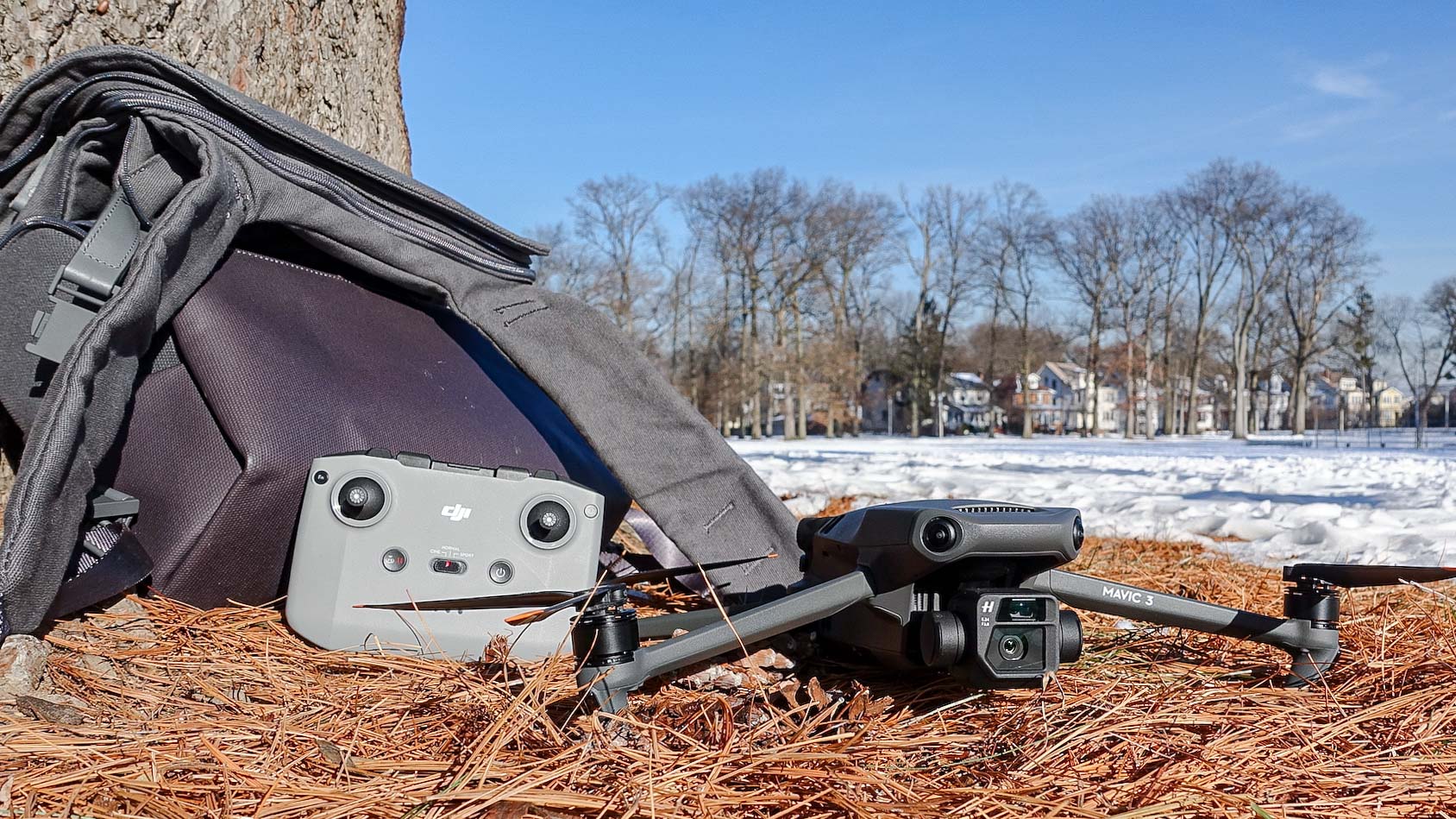
However, the $2,199 Mavic 3 is far more pricier than the models it’s replacing; it’s more than twice as expensive as the next-most capable model in DJI’s hangar: the Air 2S ($999), which has a smaller 1-inch CMOS sensor, less capable recording abilities, and a shorter but still-great 31-minute flight time.
The DJI Mavic 3 will most likely be too much drone for most people; your money is better spent on the Air 2S, the Air ($799), or the Mini 2 ($449). But if you’re looking for the highest-quality video and the longest flight time in a compact drone, then the Mavic 3 is worth the investment.

Michael A. Prospero is the U.S. Editor-in-Chief for Tom’s Guide. He oversees all evergreen content and oversees the Homes, Smart Home, and Fitness/Wearables categories for the site. In his spare time, he also tests out the latest drones, electric scooters, and smart home gadgets, such as video doorbells. Before his tenure at Tom's Guide, he was the Reviews Editor for Laptop Magazine, a reporter at Fast Company, the Times of Trenton, and, many eons back, an intern at George magazine. He received his undergraduate degree from Boston College, where he worked on the campus newspaper The Heights, and then attended the Columbia University school of Journalism. When he’s not testing out the latest running watch, electric scooter, or skiing or training for a marathon, he’s probably using the latest sous vide machine, smoker, or pizza oven, to the delight — or chagrin — of his family.
